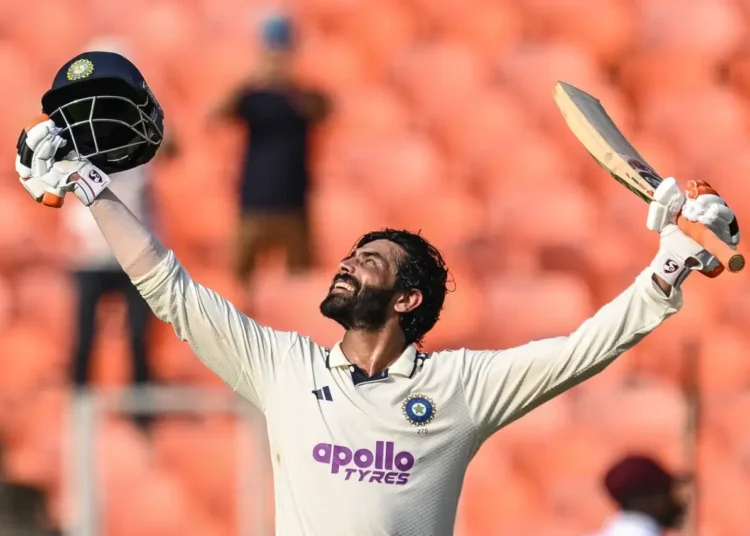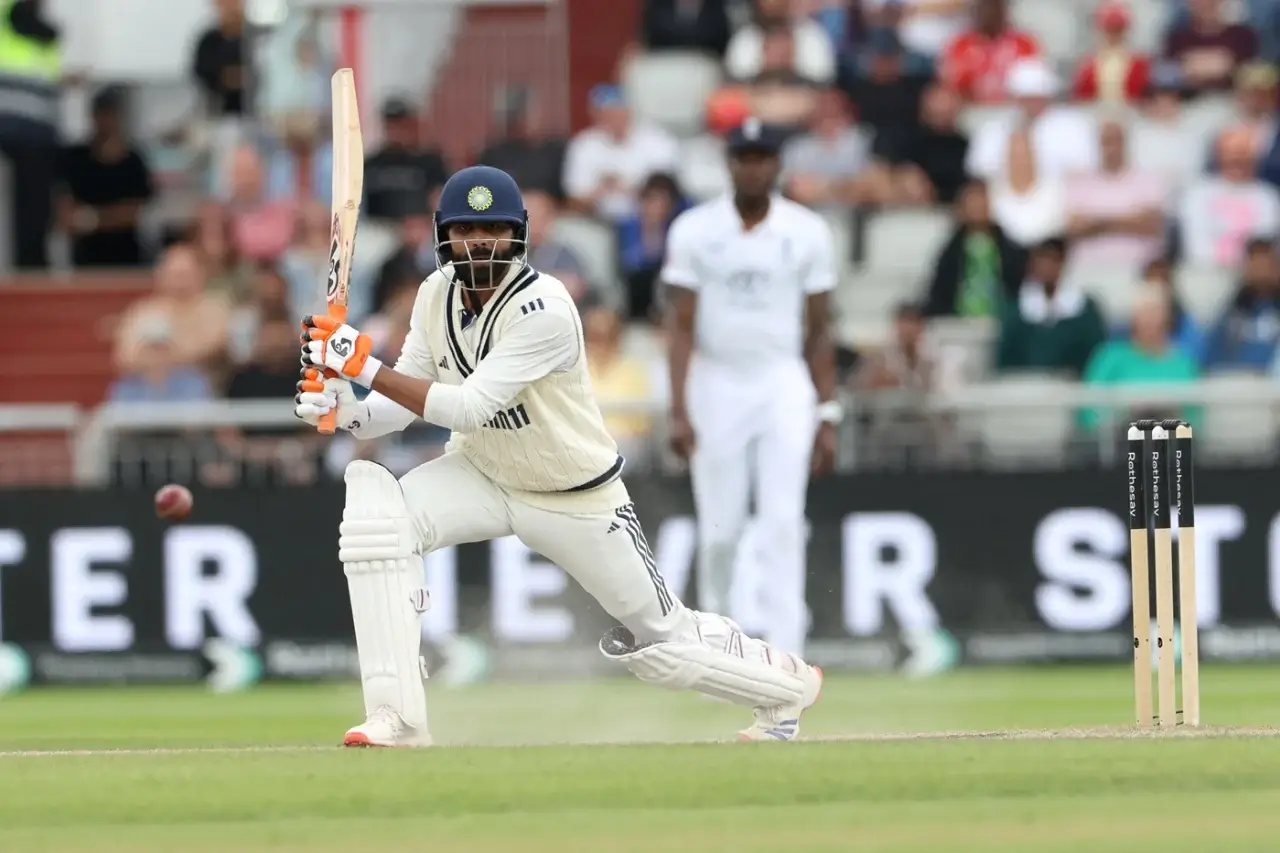India began their home Test season with total control in Ahmedabad. Ravindra Jadeja struck a fine hundred and followed it with four wickets, guiding India to a commanding innings victory. Mohammed Siraj added another stellar performance, combining pace and discipline to dismantle the West Indies batting lineup.
The result was dominant. India declared at 448 for 5 before dismissing the visitors twice for 162 and 146. Jadeja’s 104 not out and Siraj’s combined seven wickets sealed a win by an innings and 140 runs. The victory came inside three days — a statement that India’s red-ball standards remain world-class.
For the West Indies, it was another painful reminder of their Test struggles. Their top order failed to survive quality spin, while India’s bowlers found rhythm across sessions. Alick Athanaze showed resilience, but he stood alone. The rest crumbled under India’s pressure.
This match also marked a symbolic transition. With R. Ashwin retired, Jadeja carried the spin department and delivered spectacularly. Siraj, too, proved he can lead India’s pace attack at home, especially for teams like Bangladesh.
How Jadeja Reinforced His All-Round Brilliance Yet Again?
Ravindra Jadeja’s performance in Ahmedabad felt like a masterclass in control. His century on day two set up India’s dominance, but it was his follow-up spell that sealed the win. Few modern players manage to influence both innings so heavily. Jadeja now stands among the elite all-rounders in Test cricket.
He has always been India’s go-to man at home — but this match elevated that reputation. Without Ashwin, Jadeja carried the spin department alone. His 4 for 54 on a surface offering uneven turn displayed intelligence rather than luck. He worked out batters like Brandon King by adjusting his flight, pace, and angles.
At 36, Jadeja’s role is evolving. He is no longer the supporting spinner but the leader. His calm temperament, combined with batting maturity, makes him indispensable. He reads conditions quickly and knows when to attack or contain. That dual skill keeps India balanced in both innings.
Jadeja’s biggest weapon is not spin — it’s precision. He makes batters commit early, then changes trajectory or release subtly. Against the West Indies, his flight tricks exposed their technique. He forced edges, inside gaps, and made poor judgments. This ability to outthink batters separates him from ordinary spinners.
How Siraj is Becoming India’s Perfect Test Bowler?
Mohammed Siraj continues to prove he is more than just a second seamer. His rhythm, aggression, and accuracy made the pink ball talk in Ahmedabad. He took seven wickets across both innings, finishing with 4 for 40 and 3 for 31. For the first time at home, he completed a five-wicket haul in a Test match.
Siraj’s success lies in consistency. Unlike many fast bowlers in Indian conditions, he doesn’t rely solely on movement. He creates pressure through relentless control. His lengths trouble both edges, and his seam position stays upright across spells. Against the West Indies, he forced them into defensive shells before striking decisively.
What makes Siraj unique is adaptability. He adjusts to pitch behavior rather than forcing conditions to work for him. In Ahmedabad, there was some reverse swing and uneven bounce, and he used both smartly. His discipline in short bursts allowed India to rotate Bumrah efficiently.
Siraj’s Growth into a Senior Role
With every Test, Siraj grows as a leader of India’s pace unit. His energy lifts the team, and his intensity mirrors Bumrah’s. Younger bowlers watch his body language and preparation closely. In matches like this, he’s not just a wicket-taker — he’s a tone-setter.
If India manages him well, Siraj can become the next consistent long-format spearhead. His home and overseas records already point in that direction.
Why the West Indies Need an Urgent Plan for Their Test Future?
The West Indies’ performance in this Test raises familiar concerns. Their top order remains fragile, unable to handle disciplined bowling. Openers John Campbell and Tagenarine Chanderpaul failed to cross double digits across both innings. Their middle order lacked patience and game awareness.
Alick Athanaze was the only positive sign, showcasing grit against spin. His footwork and shot selection stood out, but he lacked support. The rest collapsed to predictable mistakes — over-committing to drives or sweeping from poor lines. This technical gap continues to define their overseas failures.
The team’s biggest challenge is rebuilding its batting identity. Too often, players rely on limited-overs instincts instead of defensive temperament. The board and coaching unit must encourage longer red-ball exposure. Domestic cricket needs restructuring to produce batters who can last 100 balls under pressure.
The Need for Strategic Change
Coach Daren Sammy has spoken about bridging formats, but Test cricket needs a distinct plan. The West Indies require batters who value time, bowlers who control sessions, and fitness programs that sustain five-day endurance. Without systemic change, their struggles in India and beyond will continue.
India’s Home Dominance and the Jadeja-Siraj Formula
India’s innings win reaffirms their unbeatable streak at home. Even after losing legends like Kohli and Ashwin to retirement, their system continues producing match-winners. Jadeja, Siraj, and Bumrah formed a complete bowling triangle — spin, swing, and speed in perfect balance.
The key lies in adaptability. India’s spinners attack without over-dependence on pitch help. The pacers use new and old ball phases with control. This balance makes India dangerous on any surface. Their batting, too, showed depth, with Jurel and Rahul contributing heavily before Jadeja’s hundred.
This Test also marked a symbolic comeback from their 2024 home series loss. India is redefining their strengths with newer combinations. It shows a future ready for transition yet grounded in discipline.
Conclusion: Jadeja and Siraj Carry India’s Winning Culture Forward
India’s victory over West Indies was more than a result — it was a statement. It proved that the team’s culture of dominance remains intact even in transition. Jadeja, with his hundred and four wickets, reminded the cricket world why he’s among the best modern all-rounders. Siraj, meanwhile, confirmed he’s ready to lead the next generation of India’s fast bowlers.
For the West Indies, it was another lesson in the difference between potential and execution. They must rediscover the patience and discipline that once defined their golden era. Without rebuilding their structure, such collapses will repeat across tours.
For India, this Test marks a refreshing beginning to the new season. With balance in the squad, depth in bowling, and confidence in leadership, they look set to dominate again. The trio of Jadeja, Siraj, and Bumrah forms the new heartbeat of India’s Test bowling attack. If they maintain form and fitness, India’s home dominance could stretch deep into the next decade.

















